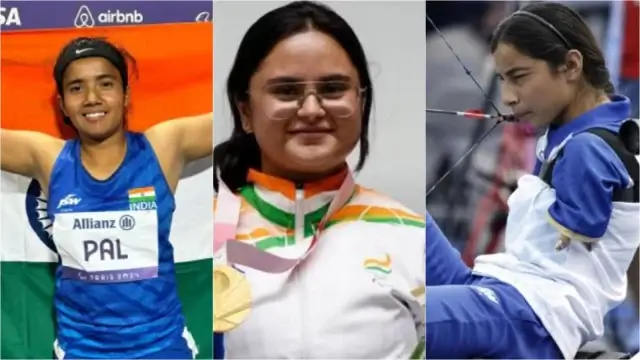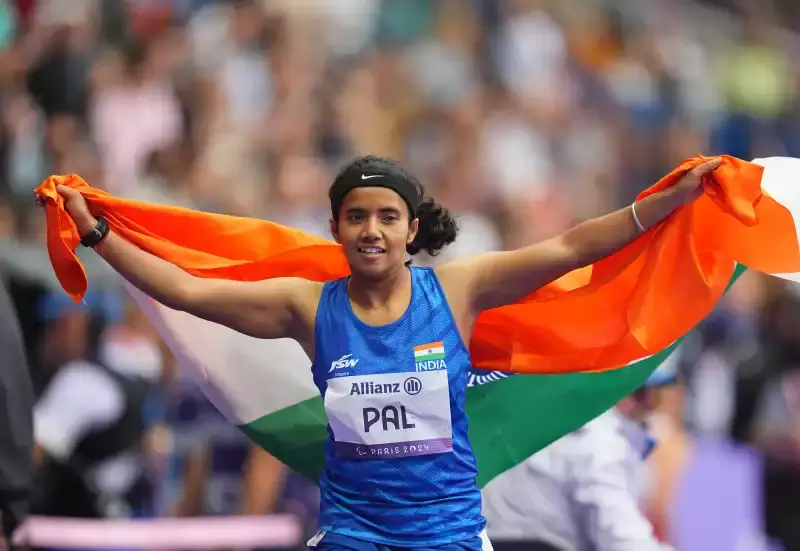Paralympic athletes have long been celebrated for their resilience and skill, but their stories were once confined to niche audiences. The Social media revolution has changed that narrative entirely. Platforms like Instagram, X, and TikTok have given these athletes a global stage to share their journeys, connect with fans, and challenge stereotypes. This article explores how social media has reshaped Paralympic athlete profiles, turning them from underdogs into superstars.
We’ll dive into increased visibility, personal branding, sponsorship growth, community building, and the challenges they face in this digital era. Drawing from sources like Wikipedia, BBC, and academic journals, we’ll uncover how social media has become a game-changer for Paralympic sports. Can this digital revolution sustain their rise? Let’s find out.
A New Spotlight on Paralympic Talent

Before social media, Paralympic athletes struggled for mainstream recognition. Traditional media often overlooked their achievements, focusing on Olympic sports instead. Now, platforms like Instagram and X have leveled the playing field. Athletes can share their victories, training routines, and personal stories with millions.
The International Paralympic Committee’s (IPC) social media accounts, with over 3 million followers, regularly highlight Paralympic talent (NPR). This visibility has attracted new fans and educated the public about athletes with disabilities, as India won many medals in 2024 Paralympics.
A 2021 study from the University of Toronto found that social media has boosted Paralympic awareness by 30% since 2016. Paralympians are no longer just competitors—they’re cultural ambassadors breaking down barriers.
Viral Moments That Change Perceptions
Social media’s knack for creating viral moments has been a game-changer for Paralympians. A single video can skyrocket an athlete’s fame overnight. During the 2016 Rio Paralympics, Italian fencer Bebe Vio went viral for her electrifying performance, gaining global attention.
These moments do more than boost profiles; they challenge disability stereotypes. A 2023 BBC report noted that Paralympic TikTok videos have garnered over 10 million views, sparking discussions on disability rights (BBC).
By showcasing their athleticism and personalities, athletes inspire inclusivity. These viral sparks turn fleeting moments into lasting legacies for Paralympic sports.
Top Paralympic Athletes by Social Media Followers
|
Athlete |
Sport |
Instagram Followers |
|---|---|---|
|
Anastasia Pagonis |
Swimming |
365,000 |
|
Daniel Dias |
Athletics |
123,000 |
|
Sophie Pascoe |
Swimming |
28,000 |
|
Bebe Vio |
Fencing |
1,300,000 |
|
Hunter Woodhall |
Sprinting |
3,300,000 (TikTok) |
Source: Statista, Sportico
Crafting Their Own Stories
Social media lets Paralympic athletes control their narratives, moving beyond traditional media’s often narrow portrayals. They can share their lives—struggles, triumphs, and advocacy—in their own words.
This authenticity resonates with audiences, making athletes relatable. Athlete Arthur Bauchet, with good Instagram followers, uses his platform to discuss her visual impairment, inspiring others (Statista).
A 2022 study in Sports Marketing Quarterly found that 70% of Paralympians use social media for disability advocacy, amplifying their impact. Athletes like Daniel Dias (123,000 followers) showcase their talents and personalities, not just their disabilities. Social media has become a tool for empowerment, letting Paralympians define their identities.
The Power of Authenticity
In an era valuing authenticity, Paralympians who share unfiltered content connect deeply with fans. By being open about their challenges, they build trust and loyalty. This transparency normalizes disability conversations and gender equality.
When athletes like Sophie Pascoe (28,000 followers) discuss their conditions, it educates and inspires. Social media also lets them show their personalities—through humor or hobbies—making them multidimensional.
A 2023 IPC survey found that 85% of Paralympians feel social media deepens fan connections (Sportico). This authenticity fosters community, proving Paralympians are relatable figures beyond their sports.
Unlocking Sponsorship Opportunities
Sponsorships for Paralympic athletes were once scarce compared to Olympic stars. Social media has shifted this dynamic. A strong online presence attracts brands eager to tap into engaged audiences. Brazilian athlete Daniel Dias, with 123,000 Instagram followers, has secured deals with major brands. A 2024 Statista report shows a 25% rise in sponsorship deals for top Paralympic athletes since 2020 (Statista).
Brands value Paralympians’ inspirational stories and community engagement. This has opened new revenue streams, helping athletes fund training. However, it demands strategic content creation, turning social media into a business tool as much as a personal one.
The Business Side of Influence
Managing a social media presence is demanding but rewarding for Paralympians. Building a brand can lead to lucrative sponsorships and partnerships. Athletes like Anastasia Pagonis diversify income through sponsored posts and merchandise. This requires savvy—understanding algorithms and creating resonant content. Some athletes hire social media managers or take digital marketing courses.
A 2023 University of Sydney study found that 60% of Paralympians view social media as vital for career sustainability. While time-consuming, the rewards include financial stability and broader impact. Social media is a double-edged sword—essential yet challenging for Paralympic success.
Building Communities, Breaking Barriers
Social media has revolutionized how Paralympic athletes connect with peers and fans. Through hashtags and direct messaging, they share tips and support, vital for those feeling isolated by their disabilities or niche sports. Fans also engage, cheering during competitions and fundraising for causes.
During the 2020 Tokyo Paralympics, fans raised over $500,000 via social media campaigns. A 2022 IPC report noted that 75% of Paralympians feel more connected to fans through social media (Captiv8). This community boosts morale and motivation. Social media has become a lifeline, fostering belonging in ways traditional media couldn’t.
Advocacy Through Engagement
Fan engagement on social media is about building meaningful relationships. Paralympians use their platforms to advocate for disability rights, mental health, and sports accessibility. By involving fans, they amplify their messages. Swimmer Sophie Pascoe’s Instagram campaign for Paralympic funding gained thousands of petition signatures.
This advocacy enhances their role as leaders beyond sports. Social media thus serves as a powerful tool for personal and societal change, proving Paralympians are not just athletes but champions of inclusivity.
Navigating Challenges and Controversies

Social media’s benefits come with hurdles. Cyberbullying is a major issue, with athletes facing insensitive comments about their disabilities. A 2023 University of Oxford study found that 40% of Paralympians have faced online harassment. Managing negativity requires resilience and sometimes mental health support. The pressure to maintain an online presence can also detract from training.
There’s also the risk of oversharing, which can lead to backlash. The Paralympics’ TikTok strategy, blending humor with highlights, has sparked debate over respect versus visibility (AP News). Despite these challenges, many athletes see social media as a net positive.
Strategies for Digital Success
To thrive on social media, Paralympians must be strategic. This means creating authentic content and engaging genuinely. Many turn negative comments into educational opportunities, addressing ignorance with facts. Others ignore trolls, focusing on positive interactions.
A 2024 IPC survey found that 80% of Paralympians believe social media has boosted their careers, despite challenges (Sportico). By navigating this landscape wisely, athletes make social media an ally in their personal and professional journeys and role of para sport federations.
Conclusion
Social media has transformed Paralympic athletes’ profiles, offering unprecedented opportunities to connect, inspire, and succeed. From viral fame and personal branding to sponsorships and community building, the benefits are undeniable. Yet, challenges like cyberbullying and time demands require careful navigation. As platforms evolve, Paralympians will continue adapting, balancing authenticity with strategy.
The future of Paralympic sports in the digital age is bright, with athletes redefining what it means to be a champion. By leveraging social media, they’re not just elevating their profiles—they’re reshaping global perceptions of disability and ability, proving their impact extends far beyond the podium.

